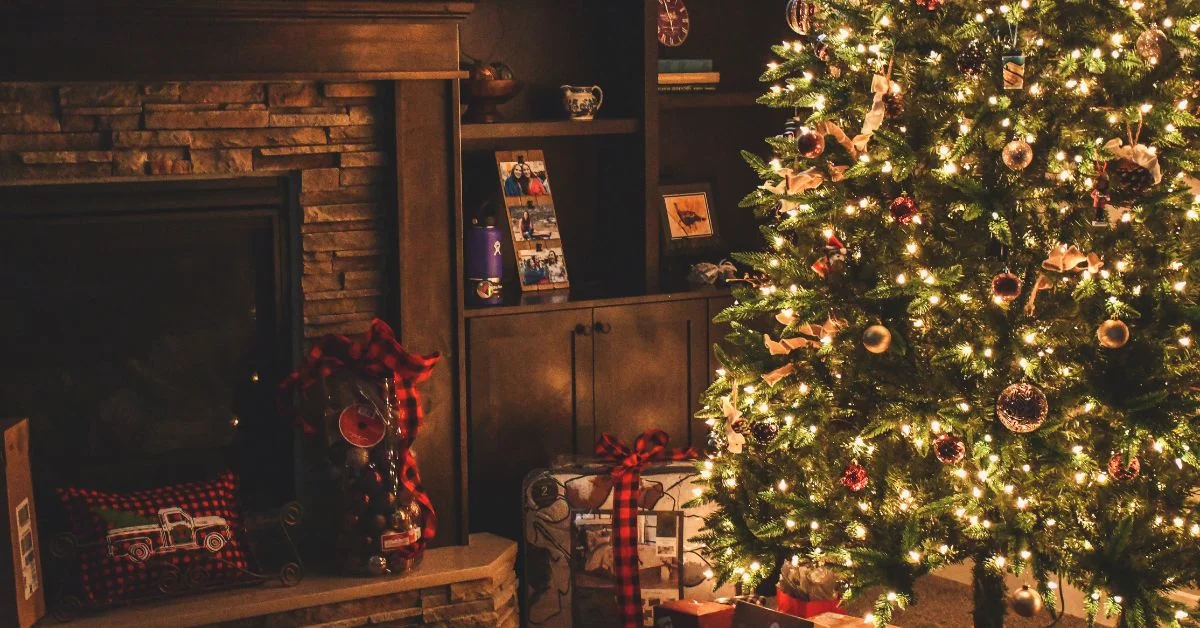In an era where tradition merges with artistry, the glass Christmas tree stands as a brilliant symbol of craftsmanship, nostalgia, and contemporary design. Whether it’s a hand-blown heirloom passed down through generations or a minimalist sculpture featured in modern interior design, these trees are no longer just ornaments—they’re focal points, storytelling pieces, and collectors’ treasures.
This article dives deep into the world of glass Christmas trees: their history, production, variations, decorative uses, and why they remain enduring favorites during the holiday season. If you’re considering adding one to your collection or simply want to understand their rising popularity, this guide offers insight, context, and practical tips—crafted in a style that informs with clarity, much like the finest journalism.
The Origin and Evolution of the Glass Christmas Tree
While the tradition of the Christmas tree itself dates back to 16th-century Germany, glass Christmas trees are a more recent phenomenon, emerging in the late 19th and early 20th centuries alongside the evolution of glassmaking techniques. Initially, they were small-scale creations, often part of holiday ornamentation rather than standalone decorations.
1. Roots in German Glassmaking
The earliest examples of glass holiday decor come from the Läuger and Lauscha regions of Germany, where artisans pioneered blown-glass ornaments known as kugeln. Over time, these skills evolved into more complex figures—eventually leading to tree forms.
2. Mid-20th Century America
As glassblowing spread to the United States, companies like Fenton, Westmoreland, and Imperial Glass experimented with more decorative glass forms. By the 1950s, tabletop glass trees began appearing, sometimes with holes designed for inserting mini lights or candles.
3. Contemporary Art Glass Movement
Today, glass Christmas trees are often the product of studio glass artists, combining traditional hand-blown methods with sculptural design. They range from whimsical to minimalist, mass-produced to one-of-a-kind.
What Defines a Glass Christmas Tree?
While the category is broad, a “glass Christmas tree” generally refers to a tree-shaped decorative object made entirely or predominantly of glass. These pieces may vary in:
- Size: From miniature (2-3 inches) to full tabletop centerpieces (12-24 inches)
- Style: Traditional pine shape, spiral twists, abstract forms
- Color: Classic greens, icy clear, multi-hued swirls, or metallic finishes
- Texture: Smooth, ribbed, crackled, bubbled, or frosted
- Functionality: Pure decor, lighted displays, votive holders, or ornament trees
Types of Glass Christmas Trees
Understanding the different types of glass trees helps in selecting the right one for your aesthetic and purpose.
1. Hand-Blown Glass Trees
Each piece is individually crafted by heating glass to molten form and shaping it with air, gravity, and tools. These are:
- Highly detailed
- Often one-of-a-kind
- More expensive due to labor and skill involved
2. Pressed Glass Trees
Made using molds and pressure, these trees often feature:
- Repetitive patterns or ridges
- Heavier base
- Greater uniformity, perfect for mass production
3. Light-Up Glass Trees
Fitted with internal LED or fiber-optic systems, these trees:
- Emit soft, ambient lighting
- Often used as nightlights or centerpieces
- Typically run on batteries or USB
4. Murano or Art Glass Trees
Produced by elite glassmakers (often in Italy or the Czech Republic), these:
- Incorporate bold colors, gold flecks, and spirals
- Are sold as luxury home decor
- Bridge the line between holiday piece and modern art
5. Vintage and Collectible Trees
Often associated with mid-century design, these include:
- Milk glass or carnival glass styles
- Trees with detachable ornaments
- Highly sought after by collectors, especially with original packaging
Why Glass Christmas Trees Remain Popular
Visual Elegance
Glass catches and reflects light in a way that few materials can. Placed near candles, fairy lights, or windows, a glass tree glows with a subtle beauty unmatched by plastic or wood.
Seasonal Versatility
Unlike traditional evergreens, a glass tree doesn’t wilt, shed, or require storage in cold garages. It can stay out year-round or come out annually without degradation.
Collectibility
For many, acquiring glass Christmas trees has become a seasonal ritual—with new designs released each year by artists or brands like Waterford, Simon Pearce, or Hallmark.
Conversation Piece
Whether displayed on a mantel, dining table, or office desk, a glass Christmas tree often sparks curiosity. People ask: Where did you get it? Is it handmade? It invites storytelling.
How to Decorate with Glass Christmas Trees
Incorporating glass trees into your holiday decor depends on your space and style.
1. Grouped Centerpieces
Use several trees of varying heights and hues to create a forest-like centerpiece for your dining table or buffet.
2. Mantel Displays
Place a few trees among pine garlands, votive candles, and string lights for a traditional yet modern touch.
3. Window Sills or Bay Windows
Let natural light shine through colored glass for a glowing display that changes with the daylight.
4. Bookshelves and Cabinets
Place a miniature tree next to books or framed photos as an understated holiday accent.
5. Minimalist Spaces
A single, tall clear-glass tree can stand alone on a sideboard or console table, reflecting a modern aesthetic.
Caring for Glass Christmas Trees
Glass, while timeless, is fragile. To preserve its clarity and integrity, follow these care tips:
- Dust Gently: Use a soft microfiber cloth or gentle duster weekly.
- Avoid Direct Sunlight: Prolonged UV exposure can cause fading or yellowing.
- Store Securely: Wrap individually in tissue and place in foam or padded boxes.
- Avoid Moisture: Never immerse lighted trees in water. Wipe clean with a damp—not wet—cloth.
- Check Electricals: If yours includes lighting, inspect wires before reuse to avoid fire hazards.
Buying Guide: What to Look for
1. Clarity and Finish
High-quality trees will be free from bubbles (unless intentional), cracks, or cloudiness. Frosted or metallic finishes should be even and smooth.
2. Maker’s Mark
Authentic glassmakers often etch their logos or sign the base. Look for stamps from brands like:
- Waterford
- Blenko
- Fenton
- Murano
3. Stability
Ensure the base is weighted or designed to sit flat, especially for taller pieces.
4. Packaging
If buying as a collectible or gift, original packaging can significantly increase value and protection.
DIY Glass Tree Projects
If you’re a craft enthusiast, glass Christmas trees can also be created using:
- Sea glass and epoxy molds
- Glass bottle recycling: Cut and stack for sculpture
- Glass bead hot glue trees
- Upcycled lightbulbs shaped into tree forms
These make thoughtful handmade gifts or personal decor pieces—just be sure to wear protective gear if cutting or heating glass.
Cultural and Symbolic Meanings
Glass, historically, symbolizes purity, clarity, and fragility. Combined with the tree—representing life, rebirth, and connection—the glass Christmas tree becomes more than just seasonal decor. It becomes an emblem of reflective celebration, of appreciating light in the darker months, and of preserving beauty in delicate form.
In Scandinavian traditions, light-reflective decor like glass is integral to celebrating winter solstice. In Catholic and Orthodox cultures, glass ornaments are viewed as symbols of eternal light.
Sustainability and Ethical Glassmaking
Eco-conscious consumers often seek transparency—literally and ethically.
Modern glass Christmas trees may be made from:
- Recycled glass
- Non-toxic coloring
- Low-waste production methods
Look for artisans and companies that emphasize:
- Local sourcing
- Fair trade
- Low-carbon shipping practices
Handmade or small-batch glassware, while more expensive, supports artistic traditions and avoids fast decor culture.
Conclusion
A glass Christmas tree is more than a seasonal accent—it’s a reflection of artistic history, personal style, and the enduring allure of light during winter months. From antique pressed glass to modern LED-infused sculptures, these delicate trees continue to evolve, adapting to new design languages while preserving the emotional tone of the holidays.
Whether used as a nostalgic keepsake, a minimalist statement, or a collector’s prize, the glass Christmas tree carries a sense of reverence. It quietly bridges the gap between festivity and reflection, inviting us to pause, admire, and remember that beauty—like tradition—is often best preserved in its most fragile forms.
FAQs
1. Are glass Christmas trees safe around pets and children?
They can be fragile and pose a breakage risk. Display them out of reach, and opt for heavier bases to avoid tipping.
2. What size glass Christmas tree is best for small spaces?
Miniature trees (3–8 inches tall) are ideal for small apartments, desks, or shelves while still providing visual impact.
3. Do glass Christmas trees come with lights inside?
Some do—especially newer models. These use LED or fiber optics, powered by batteries or USB cables.
4. Can I find vintage glass Christmas trees online?
Yes. Try sites like Etsy, eBay, or vintage decor stores. Always check seller ratings and ask for detailed photos.
5. Is it worth collecting different styles of glass trees?
Absolutely. Collecting by region, color, size, or maker can become a meaningful seasonal tradition or investment hobby.
For more information, click here.









